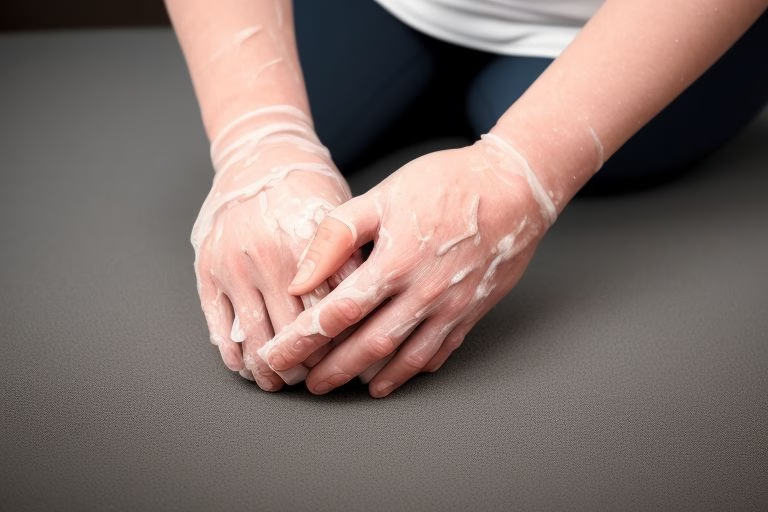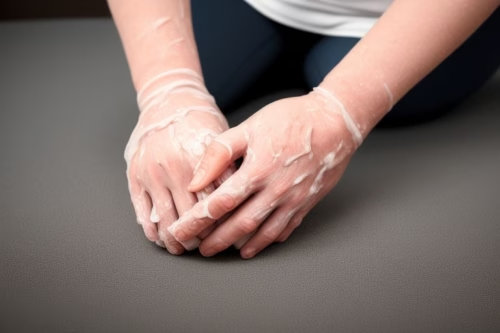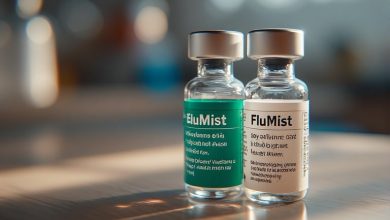
Wrist rashes are not only unsightly but can be uncomfortable, painful, and sometimes a sign of an underlying condition. From small, itchy bumps to widespread red patches, a rash on your wrist can result from a variety of causes. In this article, we provide an extensive guide that covers everything you need to know about wrist rashes—from understanding what they are and identifying their symptoms to knowing when to seek professional help and how to treat them effectively. Whether you’re dealing with allergic contact dermatitis from your watch or a more complex skin condition like lichen planus, this article will help you navigate the complexities of wrist rashes and offer actionable advice for management and prevention.
What Is a Wrist Rash?
A wrist rash is an area of irritated, inflamed skin on the wrist. It can present itself in many different forms—red, bumpy, blistering, or even spotty—and its appearance can vary based on the underlying cause. Although many rashes on the wrist are benign and self-limiting, some can indicate more serious health issues.

Key Characteristics of a Wrist Rash
- Redness and Inflammation: The skin may appear red and swollen.
- Itchiness: One of the most common symptoms, which can lead to further irritation if scratched.
- Bumps and Blisters: These can vary in size and may sometimes be filled with fluid.
- Pain or Soreness: Depending on the severity and cause, the rash may be tender to the touch.
- Spread: In some cases, the rash may extend beyond the wrist.
By paying close attention to these symptoms, you can begin to narrow down the possible causes and determine the best course of action.
Common Causes of Wrist Rashes
Wrist rashes can be triggered by various factors. Understanding these causes is crucial for proper diagnosis and treatment. Here, we discuss several of the most common triggers:
1. Allergic Contact Dermatitis
Overview:
Allergic contact dermatitis occurs when your skin reacts to a substance that comes in contact with it. On the wrist, this is often due to items like watches, bracelets, and fitness trackers that contain metals such as nickel.
Common Triggers:
- Nickel: A significant number of people are allergic to nickel, which is frequently found in jewelry and watch bands.
- Cosmetics and Soaps: Ingredients in lotions, soaps, or perfumes can trigger a reaction.
- Latex: Commonly found in rubber bands, wristbands, or even gloves.
Symptoms:
The rash usually develops within a few days of contact and is characterized by redness, swelling, and small, itchy bumps that may form blisters.
2. Eczema (Atopic Dermatitis)
Overview:
Eczema is a chronic skin condition that results in dry, itchy, and inflamed patches of skin. It often affects areas where the skin folds or is exposed to irritants, such as the wrists.
Symptoms:
- Dry, cracked skin that can be red or brownish.
- Itchiness that may intensify with stress or environmental changes.
- Occasional oozing or crusting in severe cases.
Impact:
Eczema can significantly affect quality of life, especially if the rash becomes chronic. Proper skin care and the avoidance of irritants are key to managing eczema.
3. Drug Reactions
Overview:
Certain medications can cause a rash as a side effect, known as a drug eruption. This type of rash may appear after the introduction of a new medication or after a dosage change.
Common Culprits:
- Antibiotics: Penicillin and sulfa drugs are well-known for triggering skin reactions.
- Other Medications: Various drugs can cause an allergic reaction, resulting in a rash localized on the wrist or spreading across the body.
Symptoms:
Typically, these rashes are itchy, red, and may appear suddenly. It’s essential to contact your healthcare provider immediately if you suspect a drug reaction.
4. Lichen Planus
Overview:
Lichen planus is a chronic inflammatory condition that may be linked to autoimmune processes. It affects the skin, nails, and mucous membranes.
Symptoms on the Wrist:
- Small, shiny, reddish-purple bumps.
- Bumps may have fine white lines running through them.
- Can sometimes cause discomfort or pain.
Considerations:
While lichen planus is not contagious, it can be persistent and may require long-term management.
5. Scabies
Overview:
Scabies is an infestation caused by a tiny mite known as Sarcoptes scabiei. It is highly contagious and spreads through close personal contact.
Symptoms:
- Intensely itchy, small pinkish bumps.
- Characteristic burrow marks, which appear as tiny, wavy lines under the skin.
- Often affects areas like the wrists, between fingers, and other skin folds.
Prevention and Treatment:
Due to its contagious nature, prompt treatment is essential. This involves prescription medications and thorough cleaning of bedding and clothing.
6. Viral and Bacterial Infections
Overview:
Infections, such as Rocky Mountain spotted fever or impetigo, can lead to rashes on the wrist. These infections typically accompany other systemic symptoms.
Rocky Mountain Spotted Fever:
- Caused by tick bites.
- The rash may develop within days after a fever starts.
- Other symptoms include headache, muscle pain, and nausea.
Bacterial Infections:
- Can result from minor cuts or abrasions on the wrist.
- Signs of infection include redness, swelling, and pus formation.
Recognizing the Symptoms: What to Look For
Identifying the signs and symptoms of a wrist rash is the first step toward appropriate treatment. Here are some key symptoms to monitor:
Visual Signs
- Color Changes: Look for any unusual redness or discoloration.
- Texture: The skin may appear bumpy, smooth, or have a rough texture.
- Blistering: Blisters or fluid-filled bumps are common in allergic reactions.
- Spots or Patches: Rashes may be localized in small areas or spread into larger patches.
Sensory Symptoms
- Itchiness: Persistent itchiness can lead to scratching, which may worsen the rash.
- Pain: Some rashes cause mild to severe pain, especially if the skin is inflamed or blistered.
- Burning Sensation: A burning feeling can accompany some forms of dermatitis or infection.
Systemic Symptoms
- Fever: A fever, particularly with a rash, may indicate an underlying infection.
- Swelling: If the rash is accompanied by swelling that extends beyond the wrist, it is important to seek medical advice.
- General Malaise: Fatigue, muscle pain, or a general feeling of being unwell can signal a more serious condition.
By keeping track of these symptoms, you can provide your healthcare provider with vital information to aid in diagnosis and treatment.
Diagnosis: Pinpointing the Root Cause
Accurate diagnosis is essential for effective treatment. When you visit your healthcare provider with a wrist rash, they will typically perform a comprehensive evaluation that may include:
Medical History and Physical Examination
- Detailed History: Your doctor will ask about the onset of the rash, any recent exposures (such as new jewelry or medications), and any accompanying symptoms.
- Visual Inspection: A thorough examination of the rash’s appearance, distribution, and characteristics is crucial.
Diagnostic Tests
- Skin Patch Testing: This test helps identify allergic contact dermatitis by exposing the skin to small amounts of potential allergens.
- Skin Biopsy: In cases where the diagnosis is unclear, a small sample of skin may be taken for laboratory analysis.
- Blood Tests: These can check for underlying infections, autoimmune conditions, or other systemic causes.
- Culture Tests: If a bacterial or fungal infection is suspected, samples may be taken to identify the specific organism.
When to See a Doctor
Although many wrist rashes are mild and self-limiting, there are certain circumstances in which prompt medical attention is warranted:
- Persistent Rash: If the rash does not improve after several days of home care.
- Spreading Rash: If the rash is rapidly expanding or affecting other parts of the body.
- Signs of Infection: Presence of fever, pus, or significant pain.
- Difficulty Breathing: If the rash is accompanied by respiratory distress, which could indicate an allergic reaction (anaphylaxis).
A timely diagnosis not only helps in choosing the right treatment but can also prevent complications, especially in the case of infectious causes like scabies or Rocky Mountain spotted fever.
Effective Treatments for Wrist Rashes
Treatment options for wrist rashes depend on the underlying cause. Here, we outline various treatment strategies that can help alleviate symptoms and promote healing.
Self-Care and Home Remedies
For mild cases or early stages of a rash, self-care is often the first line of defense:
- Cool Compresses: Applying a cool, damp cloth to the affected area can reduce inflammation and soothe itching.
- Gentle Cleansing: Use mild, fragrance-free soap and lukewarm water to wash the area. Avoid hot water, which can exacerbate irritation.
- Moisturizers: Regular application of hypoallergenic moisturizers helps maintain skin hydration, particularly for conditions like eczema.
- Avoiding Irritants: Identify and remove any potential irritants such as certain metals, harsh chemicals, or new cosmetic products.
- Over-the-Counter Medications: Antihistamines and hydrocortisone creams can reduce itching and inflammation in allergic reactions.
Medical Treatments
When self-care measures are insufficient or the rash is severe, medical treatments may be necessary:
Prescription Medications
- Corticosteroid Creams and Lotions: These help reduce inflammation and alleviate symptoms for conditions like allergic contact dermatitis and eczema.
- Oral Antihistamines: Prescription-strength antihistamines may be used for more severe allergic reactions.
- Antibiotics: If the rash is caused by a bacterial infection, such as impetigo or an infected eczema site, your doctor may prescribe an appropriate antibiotic.
- Antiviral or Antifungal Treatments: In cases where a viral or fungal infection is suspected, specific medications may be required.
Specialized Treatments
- Phototherapy: For chronic skin conditions such as eczema or lichen planus that do not respond to conventional treatment, ultraviolet (UV) light therapy may be recommended.
- Biologic Medications: In cases of severe or refractory eczema, newer biologic therapies that target the immune system may offer relief.
- Scabicides: For infestations like scabies, topical medications are prescribed to eliminate the mites. In addition, it is essential to treat all close contacts and thoroughly clean bedding and clothing.
Tailoring Treatment to the Cause
It is important to note that a “one size fits all” approach does not work for wrist rashes. For example:
- If the rash is due to an allergic reaction to a metal in a watch or bracelet, the first step is to stop using the offending item.
- In the case of eczema, consistent skin care combined with medical treatments can reduce flare-ups.
- A drug-induced rash requires consultation with a healthcare provider to modify or discontinue the suspected medication.
- For infectious causes, early diagnosis and prompt treatment are essential to prevent complications.
Prevention and Long-Term Management
Even after successful treatment, taking steps to prevent recurrence is vital. Here are some tips to help keep your skin healthy and rash-free:
Avoiding Common Triggers
- Identify Allergens: Undergo patch testing if you suspect an allergic reaction. Avoid jewelry, watches, or other accessories that contain metals like nickel.
- Read Labels: Be cautious with cosmetic and skincare products. Opt for hypoallergenic and fragrance-free options.
- Maintain Hygiene: Regular hand and wrist washing can prevent the buildup of irritants and reduce the risk of infections.
Skin Care Best Practices
- Moisturize Regularly: Keep your skin hydrated to maintain its natural barrier function.
- Use Gentle Cleansers: Harsh soaps can strip your skin of its natural oils. Choose products designed for sensitive skin.
- Wear Protective Gear: If you work with chemicals or in environments where your skin is exposed to irritants, wear appropriate gloves and protective clothing.
Lifestyle Considerations
- Manage Stress: Stress can exacerbate many skin conditions, including eczema and lichen planus. Incorporate stress management techniques such as exercise, meditation, or yoga.
- Diet and Hydration: A balanced diet rich in vitamins and antioxidants, coupled with proper hydration, can help maintain healthy skin.
- Follow Up with Your Doctor: For chronic conditions or recurring rashes, regular medical follow-ups are essential to monitor progress and adjust treatment plans if necessary.
When to Seek Professional Help
Although many wrist rashes resolve with proper self-care, there are circumstances when consulting a healthcare professional is imperative:
- Persistent or Worsening Symptoms: If you notice that the rash is not improving or is getting worse over time.
- Accompanying Systemic Symptoms: Fever, fatigue, or signs of infection warrant immediate medical attention.
- Widespread Rash or Rapid Onset: A rash that spreads quickly across your body or develops in a matter of hours should be evaluated.
- Uncertainty About the Cause: If you’re unsure whether the rash is due to an allergic reaction, infection, or another condition, getting a professional diagnosis can ensure proper treatment.
Early intervention can prevent complications, especially in cases of severe allergic reactions or infectious diseases.
Real-Life Case Studies: How Others Have Overcome Wrist Rashes
Case Study 1: Allergic Contact Dermatitis from a Fitness Tracker
Background:
A 28-year-old avid runner developed an itchy, red rash on her wrist after wearing a new fitness tracker. The rash appeared within a few days of first using the device.
Diagnosis and Treatment:
After a consultation with her dermatologist, it was determined that she had an allergic reaction to the nickel in the fitness tracker. The treatment plan included:
- Discontinuing use of the tracker.
- Applying topical corticosteroids to reduce inflammation.
- Switching to a nickel-free alternative.
Outcome:
Her rash subsided within a week, and she has since been careful to choose accessories that do not contain allergens.
Case Study 2: Eczema Management in a Young Child
Background:
A 6-year-old child with a history of eczema developed a persistent rash on his wrist, likely aggravated by exposure to harsh detergents and environmental factors.
Diagnosis and Treatment:
The pediatrician recommended:
- Using fragrance-free, gentle cleansers.
- Applying a rich moisturizer frequently.
- Incorporating mild corticosteroid cream during flare-ups.
Outcome:
Over several months, with consistent care and avoidance of triggers, the child’s eczema became more manageable, reducing the frequency and severity of outbreaks.
Case Study 3: Scabies Outbreak in a Family Setting
Background:
A family of five experienced a widespread, intensely itchy rash, with several members showing characteristic burrow marks on their wrists and between the fingers.
Diagnosis and Treatment:
After confirming the diagnosis of scabies:
- All family members were treated simultaneously with prescription scabicides.
- Home cleaning protocols were implemented, including washing all bedding and clothing in hot water.
- Items that could not be washed were sealed in plastic bags for several days.
Outcome:
The coordinated approach led to the elimination of the infestation, and no further outbreaks were reported.
Advanced Treatments and Emerging Therapies
For individuals with chronic or severe skin conditions, traditional treatments may sometimes fall short. Recent advances in dermatology offer new hope for patients with recalcitrant wrist rashes.
Biologic Therapies
- What They Are:
Biologics are advanced medications that target specific parts of the immune system. They have been used successfully in the treatment of severe eczema and psoriasis. - Benefits:
These treatments can reduce inflammation and prevent flare-ups in patients who do not respond well to conventional therapies. - Considerations:
Biologics are typically prescribed for patients with moderate to severe conditions after other treatment options have been exhausted.
Phototherapy
- Overview:
Phototherapy involves exposing the skin to controlled amounts of ultraviolet (UV) light. This treatment is particularly effective for chronic inflammatory skin conditions. - Application:
Patients typically undergo sessions several times a week, and the therapy is administered under the supervision of a dermatologist. - Effectiveness:
Many patients experience a significant reduction in symptoms, including itchiness and redness, after several weeks of treatment.
Immunomodulatory Medications
- Purpose:
Medications that modulate the immune system can be particularly helpful in managing autoimmune-related skin conditions like lichen planus. - Usage:
These medications are often used in conjunction with other treatments to provide long-term relief and reduce the risk of flare-ups.
Lifestyle and Home Remedies for Lasting Relief
In addition to medical treatments, incorporating certain lifestyle changes and home remedies can significantly help in managing and preventing wrist rashes.
Daily Skin Care Routine
- Cleansing:
Use lukewarm water and a gentle cleanser specifically formulated for sensitive skin. Avoid scrubbing, as this can further irritate the skin. - Moisturizing:
Apply a high-quality, fragrance-free moisturizer immediately after washing your skin to lock in moisture. - Sun Protection:
Use sunscreen on exposed skin to prevent sunburn, which can exacerbate many skin conditions.
Natural Remedies
- Oatmeal Baths:
Oatmeal has soothing properties and can help alleviate itching and dryness. - Aloe Vera:
Known for its anti-inflammatory and healing properties, aloe vera gel can be applied directly to the rash for relief. - Cold Compresses:
A cold compress can help reduce inflammation and numb the affected area temporarily, easing the discomfort.
Stress Management
- Mind-Body Practices:
Techniques such as yoga, meditation, and deep breathing exercises can help reduce stress levels. Stress is a known trigger for many skin conditions, including eczema. - Regular Exercise:
Physical activity not only improves overall health but also helps in reducing stress and promoting better skin circulation.
When to Revisit Your Dermatologist
Even with diligent care, certain signs indicate that you should consult a dermatologist for further evaluation:
- Recurrent Outbreaks:
Frequent or chronic rashes may require adjustments in your treatment plan or a more in-depth diagnostic evaluation. - New or Unusual Symptoms:
The appearance of new symptoms, such as unexplained weight loss or persistent fever along with the rash, warrants immediate medical attention. - Side Effects of Treatment:
If your prescribed treatment causes adverse effects, it’s important to discuss these with your healthcare provider so that alternative therapies can be considered.
Final Thoughts
Wrist rashes are a multifaceted issue that can stem from a variety of causes—from simple allergic reactions to more complex autoimmune conditions. Recognizing the symptoms, understanding the triggers, and seeking appropriate medical care are the first steps in managing this condition effectively. Whether it’s through simple home remedies, lifestyle adjustments, or advanced medical treatments, there are numerous ways to bring relief and prevent future outbreaks.
Key Takeaways:
- Identify the Cause:
Determine whether your wrist rash is due to contact dermatitis, eczema, a drug reaction, scabies, or an infection. Each cause has a specific treatment approach. - Practice Preventative Care:
Adopt a regular skin care routine, avoid known allergens, and maintain a healthy lifestyle to minimize flare-ups. - Seek Professional Guidance:
Don’t hesitate to consult with a dermatologist if your symptoms persist or worsen.
By following these guidelines and incorporating the tips discussed above, you can effectively manage a wrist rash and improve your overall skin health.
Resources for Further Reading
Staying informed about skin health and new treatment options is crucial. Consider exploring reputable dermatology websites, scientific journals, and trusted health information portals for the latest research and recommendations on managing wrist rashes and other skin conditions.


